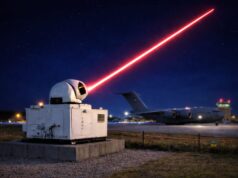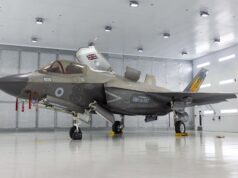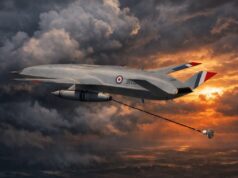On the afternoon of September 21, 2023, two Italian Air Force F-35 jets, part of the Task Force Air-32nd Wing, executed their inaugural alert scramble from the Malbork Air Base in Poland following orders from NATO.
This response came after NATO radars detected Russian aircraft in international airspace over the Baltic Sea, in proximity to NATO borders.
In a swift response coordinated by NATO’s Combined Air Operations Centre at Uedem, the Italian F-35s were dispatched to inspect the situation. Upon reaching the location, they identified the aircraft as two Russian Federation Su-30 FLANKER fighter jets. Notably, these Russian jets were not following a declared flight plan and had made no contact with Air Traffic control.
Following their identification, the Italian F-35s escorted the Russian aircraft back towards their national borders. Throughout this encounter, both sides maintained a professional demeanor.
Importantly, the Russian aircraft did not enter NATO airspace at any point. Upon successfully ensuring the Russian jets moved away, the NATO F-35s safely returned to Malbork Air Base.
NATO fighter jets are frequently launched for such routine monitoring missions along the Alliance’s borders, including areas near the Baltic Sea shores.
Currently, the Italian F-35 detachment, known as the Task Force Air 32nd Wing, is stationed in Poland. They operate as a part of NATO’s enhanced Air Policing, available round-the-clock to reinforce Alliance deterrence and defence operations.













The F35 is taking on more roles more frequently.
If the other aircraft would actually turn on transponders and talk to air traffic control perhaps constant escort from nato aircraft wouldn’t be necessary.
Fighters dont have ATC transponders , cargo and larger planes yes.
Anyway the fighters have their own radar and track and search functions that airliners dont have – their ‘radars’ are for weather so dont want to go near an airliner
So I think this is all a beatup about ATC and such
I would think for the RAF even they talk only to military ATC , who possibly pass on to the civilian system . Maybe someone can enlighten
Bizarre that they claim they escorted the Su-35s ‘out of international airspace’. the PR people clearly, as its nonsense
Most NATO fast jet’s are equipped with ADS-B transponders. These can be switched off in time of conflict. And RAF fast jet’s talk to civilian and military ATC. Especially when navigating around the UK. Airspace is very tightly controlled. You can follow Typhoons on flight tracker when they are over Lincolnshire or near shorw over the North Sea, its a free app you can have on your phone. ADS-B allows this.
All NATO “fighter” type aircraft, but also including helicopters, transport, cargo, tanker, SIGINT and AEW aircraft use a multimode identification friend or foe (IFF) system. Training aircraft normally carry a more rudimentary version. This is a standing NATO requirement.
IFF predominantly has two main modes, civilian and military. Which are broken down in to sub-modes. The civilian mode emulates normal civilian air transport codes, that can transmit a height reference to the ATC secondary radar. Thereby allowing ATC to see the height of the aircraft, that a secondary radar would not normally provide. The civilian modes can be switched off when required. There are a number of military modes, which include both clear and encrypted codes.
Further, all UK military aircraft must also now have fitted automatic dependent surveillance – broadcast (ADS-B). If I remember correctly this was a European requirement from EASA. ADS-B is similar in function to IFF, In that each aircraft uses a dedicated identification code that is transmitted. This is then used to work out location using GPS as a reference. Thereby it will generate air proximity warnings between aircraft. Gliders are supposed to carry the basic transmitter and there have been petitions for hand gliders, paramotors and parasails to carry them as well. Aircraft using ADS-B can be tracked on commercial smart phone apps. Again, our military aircraft do have the option of turning it off, which is done on certain operations and if going to war.
Russian aircraft have their own form of IFF. Which does include the civilian mode. But they deliberately choose to have it switched off. Which along with the absence of any flight plans, means the unidentified aircraft must be visually identified and then shepherded. Which is primarily for the safety of other air users, i.e. commercial aircraft.
Secondary radar is different to primary radar. Secondary does not rely on a transmitted reflection to determine the distance to the object. Instead, the “object” receives the transmission, then transmits a reply on a second frequency. This means that the secondary radar has at least double the range of a primary radar (operating with the same power output). It’s actually further than that as the receiver is more sensitive.
Thanks for that . The common online software that shows where planes are – that are within a ‘home user’ ground station- picks ups I thinks it the ADSB signals shows the locations of military aircraft like C-17 , C130 even AWACS that are operation along the Ukraines borders on operational missions.
You will never see a fighter jet like the story covers , Russian or Nato.
Thanks for the detailed info but if a RC-135 or Awacs with a IFF using civilian mode can be seen why cant see these F-35s or even RAF Typhoons on north sea patrol
Yes, apps like Plane Finder use ADS-B data. They cannot use IFF data. You will find RAF Typhoons and F35s on Plane Finder. Normally when these are operating over the UK, especially flying over the low altitude training areas, the ADS-B is turned on. When flying in the air combat ranges ADS-B is normally turned off.
As Typhoon and F35 has Mode 5 IFF, this provides the same type of data as ADS-B. Which means at higher altitudes it can be turned off. At low level due to the lack of published flight plans, gliders and light aircraft can be a risk to flight safety for low flying fast jets. Hence why it’s turned on.
You will also see aircraft like our RC-135s operating around the Black Sea on Plane Finder. Which might seem surprising, but it is to provide a record of the aircraft’s movements in International Airspace, as it provides GPS based location updates. It is a tool to prove the aircraft is not operating in Russian or conflicted airspace.
Fighter airplane have transponders capable of more those in civilian aircraft. 40 year avionics
(aviation electronics) tech here, check facts
before posting.